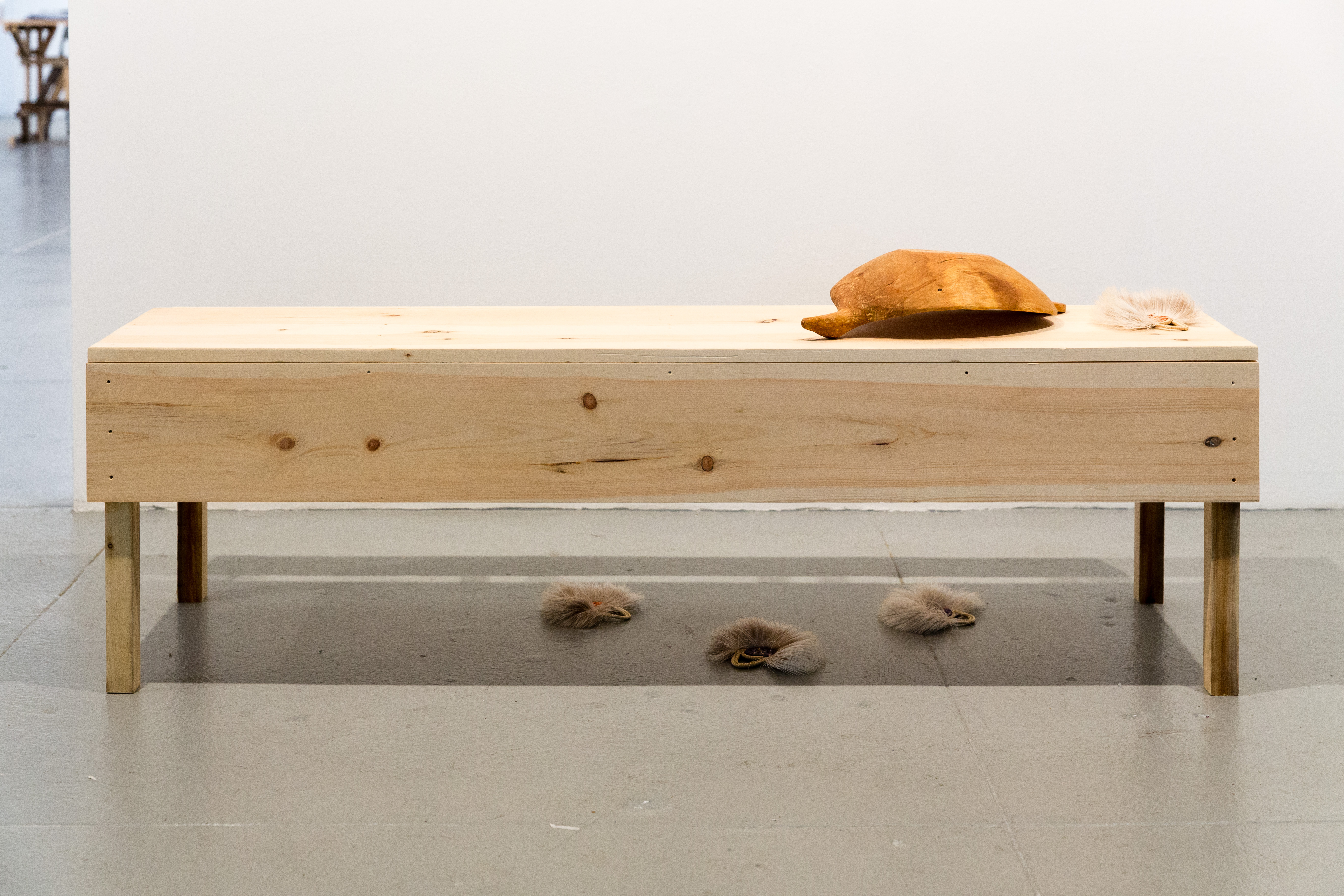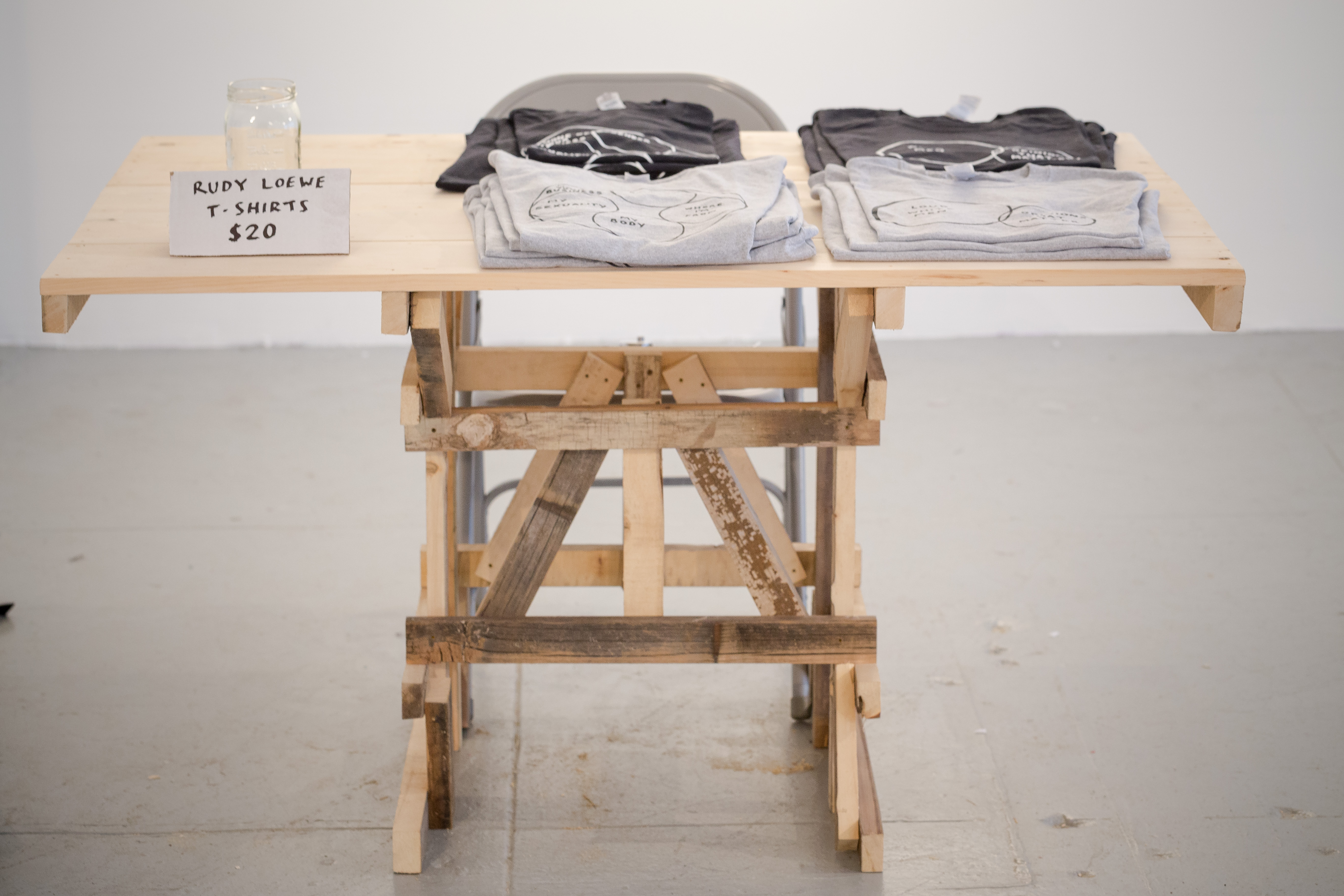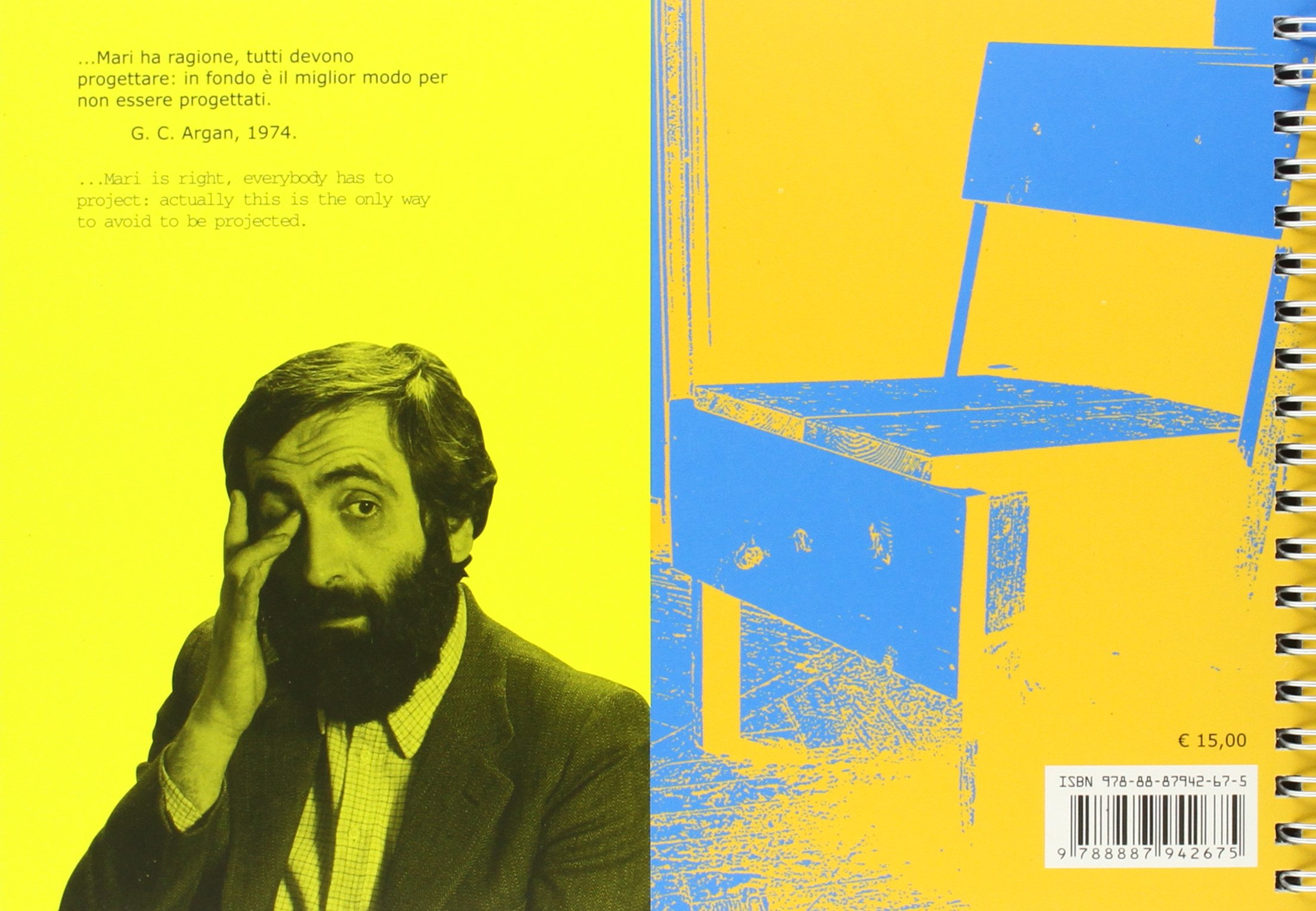
Various Display Elements (for Enzo Mari)
Reclaimed cedar from New York City watertowers, Enzo Mari designed-tables, yellow pine bench, nails, mirrors. Dimensions: variable (pictured: 54" square in foreground for Rebecca Wilcox, 7' x 3' x 3' in background for Duane Linklater, pictured: 54" square in background for Sarah Rose and Rudy Loewe). (2015)Enzo Mari’s 1974 book Autoprogettazione? – translated roughly as “Self-design?” or, “Objects that design themselves?” – features 19 plans for furniture that can be constructed by virtually anyone using standard dimensional lumber. I was initially introduced to Autoprogettazione by a close collaborator, industrial designer Ben Cohen, and over the years I have often returned to Mari’s designs for their simplicity, the lightness and material economy of their form, and for the figure and applied pedagogical philosophy of Enzo Mari himself. In Mari’s introduction to the 2002 reissue of his book, he explains his project thusly: “I thought that if people were encouraged to build a table with their own hands, they would be able to understand the thinking behind it.” I have built a number of these tables as a component of collective projects and collaborations with other artists, and consequently, Mari’s method has become a leitmotif in my own practice.
One example: barred from travelling to Kosovo for a 2011 project with Red76, I built two Mari tables in a disused storefront in Long Island City in parallel with two tables that were to be built within the hosting art center in Priština. The tables became work surfaces for a project called Kosovo Reading Room (2011), an open access bookmaking studio and library which I operated with Kendra Sullivan that summer. Skype calls with Red76 and talks and screenings in the Long Island City space that were broadcast to Kosovo created a link between and a mirroring of the two sites, reinforced by the presence of Mari’s tables in the two sites. Moreover, Mari’s aesthetic served as a touchstone to the project’s focus on the “parallel education system” that operated clandestinely in restaurant backrooms and cellars to ensure the education of Kosovar nationals in the years surrounding the Kosovo War (1998 – 1999).
As much a toolkit a philosophy for a pragmatic and socially-engaged form of design, Mari’s Autoprogettazione aims to “teach anyone to look at the present state of [industrial] production” with a critical eye. Mari suggests that good design must orient toward “real needs” rather than aesthetic innovation, because “everything exists already.” His work calls the user of an object to play an active role in the object’s design and construction. By extension, we are encouraged to remake the world with our own hands, based on essential needs. While you do find reproduction Mari furniture on the Internet these days, the authentic Mari is the one you build.
For Accompaniment, Mari’s tables are (re)constructed in collaboration with specific needs and requests by the curators and other artists in the Accompaniment exhibition. Enzo Mari is contacted and asked to be interviewed about his work as it has figured as a site of and support for accompaniment.






Captions (Top->Bottom): Enzo Mari, back cover of Autoprogettazione? (1974). Rebecca Wilcox's piece, installed on of Mari table. (Photo: Matt Vicari)Mari-inspired bench with work by Tanya Lukin Linklater . (Photo: Matt Vicari)Mari-inspired bench with work by Tanya Lukin Linklater. (Photo: Matt Vicari)Duane Linklater's pieces, installed on Mari table with custom mirror top. (Photo: Matt Vicari)Duane Linklater's pieces, installed on Mari table with custom mirror top, and work by Rebecca Wilcox and Rudy Loewe. (Photo: Matt Vicari)Mari tables and Mari-inspired bench with work by Tanya Lukin Linklater (light work in foreground by Kara Hamilton/Angie Keefer) (Photo: Matt Vicari)Modified Enzo Mari table with installation by Rudy Loewe.
Timeline
Accompaniment, curated by Kari Cwynar and Kendra Sullivan at EFA Project Space, NYC. December 2015 – January 2016.